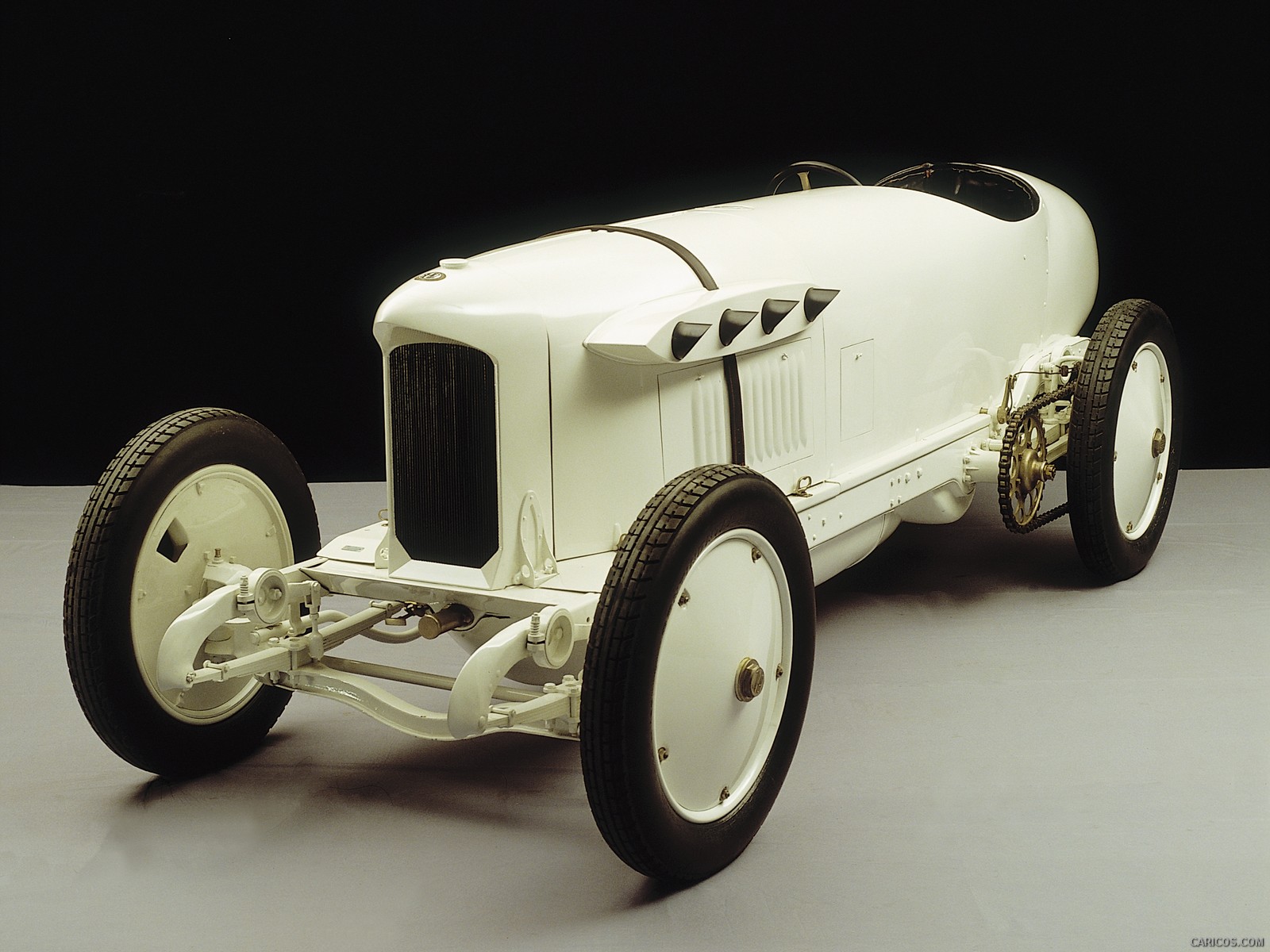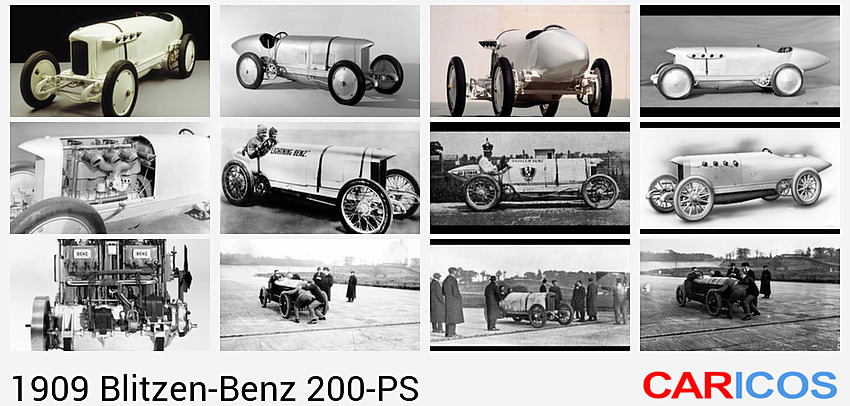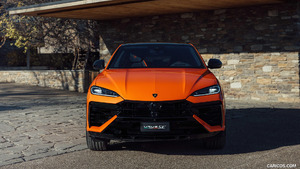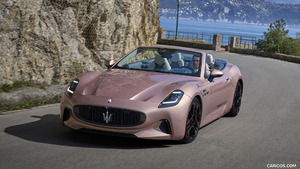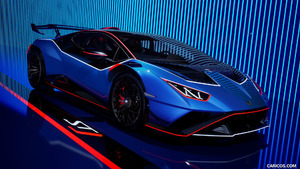1909 – Benz & Cie. develops record-breaking car reaching 200 km/h
Stuttgart/Mannheim – At the start of the 20th century, the record-breaking Benz 200 hp was the fastest car in the world. On 8 November 1909 at the Brooklands race track in England, driving this car which had been built in Mannheim, Victor Héméry broke through the 200 km/h speed mark - the very first time this had been achieved in an internal combustion-engined car. Two years later, Bob Burman finally reached the absolute speed record of 228.1 km/h in Daytona Beach. This record for cars was to last some eight years, ultimately turning the record-breaking “Blitzen-Benz” (“Lightning Benz”), as it was known, into something of a legend.
Development of the record-breaking Benz 200 hp started in 1909 at Benz & Cie. in Mannheim under the guidance of Victor Héméry. Born in Brest in 1876, the Frenchman was one of the most successful racing drivers of his time, and was engaged by Benz & Cie. in 1907. Nevertheless, the Mannheim brand's involvement in motorsport and record-breaking attempts was not self-evident. Although Carl Benz invented the automobile as a means of transport in 1886, he expressly wasted no thoughts on competitive sport during the early years, but instead even voiced criticism of such activities: “Instead of taking part in races which provide no benefits in terms of experience, but on the contrary cause damage, we will continue to focus on the production of robust and reliable touring cars”, were the words of Carl Benz in 1901.
At the beginning of the 20th century, the attitude of Benz & Cie. towards motor racing changed, however. After investigating ways of increasing competitiveness in particular, Julius Ganss, a Board Member of Benz & Cie., came to the conclusion that even Benz could not afford to ignore the intricacies of modern market mechanisms. With a thorough appreciation of the qualities inherent in the company’s models, he knew that Benz was perfectly equipped to build a sports car which could outstrip any other form of transport at the time – including even trains and aircraft.
This new strategy and the accompanying changes it entailed resulted in the appearance of racing cars with large capacity four-cylinder engines in 1908: the Benz 120 hp Grand Prix car, and the Benz 150 hp racing car derived from that model, achieved success at different races in both Europe and America. This was now to form the basis for the development of the new record-breaking car with which Benz was to achieve a speed of more than 200 km/h for the very first time.
The starting point for the new vehicle was the Benz 150 hp racing car. By enlarging the bore to 185 mm, the displacement of the 15.1-litre engine was increased to a substantial 21.5 litres - to date still the engine with the largest displacement ever to be used for a racing car or record-breaking car by Mercedes-Benz and its preceding brands. In the record-breaking Benz car, the unit produced up to 147 kW (200 hp) at 1600 rpm. The four-cylinder in-line engine consisted of cylinders cast together in pairs, and weighed 407 kg. It had overhead inlet and outlet valves as well as two spark plugs per cylinder. The engine's power was transferred to the rear axle by a four-speed manual transmission via an idler shaft and chain.
Initially the engine was still used in the body of the Benz Grand Prix car of 1908. It was under this name, and with Fritz Erle at the wheel, that the car also successfully completed its first outing at the one-kilometre race in Frankfurt am Main on 22 August 1909. With a flying start, Erle covered the kilometre in 22.6 seconds, equivalent to an average speed of 159.3 km/h and enough to secure him the Grand Duchess of Hesse prize.
Historical photos show that the car already had its characteristic aerodynamic body at the one-kilometre race in Frankfurt/Main: Erle and Héméry made the car as narrow as possible in order to reduce wind resistance to a minimum, which explains why the gearshift and handbrake levers and the exhaust system were located outside the body of the car, with only bulges in the hood giving the exhaust rocker arms the space they required. The high-standing, narrow radiator core was accommodated behind a brass grille, whose upper end formed an expansion tank pointing out sharply from the front of the car. This “bird’s beak” helped to give the record-breaking machine its striking and somewhat aggressive appearance, whilst at the rear of the car the body tapered off into a pointed tail. When it came to the seat positions, the driver and co-driver – whose job it was to operate the hand-operated petrol pump – were literally shoulder-to-shoulder.
It was not only the performance and appearance which enthralled the public - the acoustics of the car also caused delight: the sound levels produced by the four-cylinder engine were described as “infernal”. This was because the combination of the cylinders, each with a capacity of more than 5 litres, created a thunderous roar which left spectators' ears ringing and the earth shaking. The fact that the exhaust pipe also ejected flames from time to time only served to underscore the brute strength of the car.
Victor Héméry, who together with Hans Nibel was instrumental in pushing the project forward, drove the 200-hp car for the first time on 17 October 1909 at a sprint race in Brussels, where he succeeded in totally outclassing the competition. Race victories were not the primary aim of Benz & Cie., however. It rather more had its sights set on breaking the iconic speed mark of 200 km/h.
In the late autumn of 1909, therefore, the Benz 200 hp set out to break the record in England: on 8 November 1909, Victor Héméry looked to exceed 200 km/h on the track at Brooklands. The circuit was just two years old, and had been designed as a high-speed road for modern racing cars. In 1909, Brooklands was the only track in Europe on which a speed of 200 km/h was possible. To begin with Héméry ran the car in, just touching the speed limit: the clear goal of that day was to go faster than 200 km/h for the first time. But Brooklands did not make it easy for him - the two steep curves of the concrete oval, designed for the highest speeds, also posed a barrier at the same time: if he drove too fast, there was a danger of taking off.
Nevertheless, Héméry succeeded in mastering both the car and the track. A speed of 202.648 km/h was recorded for the kilometre, and he even reached 205.666 km/h over the half-mile, from flying starts in both cases –as a result the 8 November 1909 became a great day for Benz. The precision achieved in measuring the speed was also novel: for the first it was possible to record time to three decimal places, thanks to new equipment produced by the company Holden.
The 200 km/h mark had now been broken for the first time in Europe. Yet internationally this did not place the record-breaking Benz 200 hp in something of a special position. Even though no other internal combustion-engined motor car in the entire world had travelled as fast, as ever there was still strong competition from a supposedly superseded technology, namely the steam engine: the fastest road vehicles of this era were steam cars such as the Stanley Steamer. Using such a vehicle, Fred Marriott had exceeded a speed of 205 km/h at Daytona Beach in 1906. But the engineers were convinced that the record-breaking car from Mannheim was capable of matching this speed. The race tracks of old Europe, however, were simply no longer able to support such speeds. This is why Benz & Cie. therefore turned the focus of its attention on America when it came to plans for its record-breaking 200-hp car.
